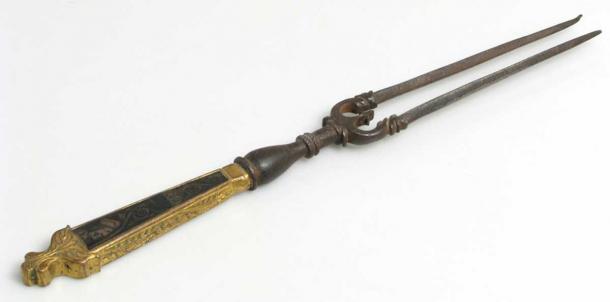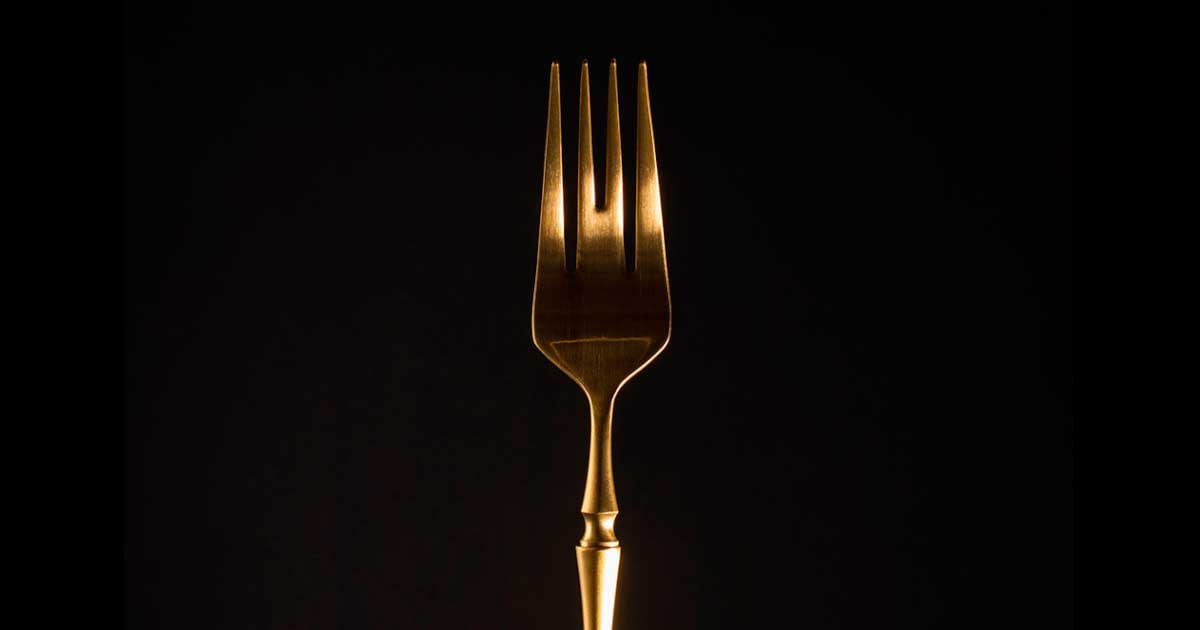Forks Were Once Seen as Blasphemous and Effeminate
You may not know it, but the fork is a relatively new invention, especially when comparing it to the spoon and the knife. So much so, that it only became popular in the United States in the 19th century. Tracing the history of the humble fork can tell us a lot about society, religion, and even gender stereotypes. Associated with Eastern decadence, the fork was once seen as blasphemous and effeminate.
One story holds that the fork, as a personal eating utensil, was first brought to Europe when a Byzantine princess married the Doge of Venice in the 11th century. The fork in question was a two-tined gold folk which she used to eat preserved fruits to avoid sticky fingers. While the concept can seem logical today, it was scandalous during her era and it caused ripples in Catholic society, where these dainty forks were seen as sacrilegious and decadent.

A Royal Feast, the 1579 painting of King Philip II of Spain banqueting with his family and courtiers, by Sánchez Coello. (Public domain)
According to Sarah Coffin, author of Feeding Desire: Design and the Tools of the Table 1500-2005, “it [the fork] wasn’t associated with Christian values on the grounds that it wasn’t essential to life. Instead, it was perceived as something that would be used by a seductress of the East.” Whether the offence lay in the similarity between the fork and the Devil’s pitchfork or in the break with eating traditions of the time, it is said that when the princess died of the plague St. Peter Damian, a Benedictine monk, saw it as justified punishment for her vanity, since God had created hands to act as natural forks.
This story has been attributed to two different Byzantine princesses, Theodora Doukaina and Maria Argyropoulina, and the dates don’t really add up. In any case, the message is clear. The use of forks was frowned upon and seen as a hedonistic, anti-Catholic trait. Remember that this was an era when most Europeans, including the upper echelons of society, ate with their fingers and used knives. Soup was eaten from communal bowls and the tablecloth functioned as a giant communal napkin!

15th century Italian fork. (Public domain)
In fact, the fork was only really popularized in the post-medieval era, becoming more widespread with the growing popularity of pasta, and from there it spread around Europe. When Catherine de Medici married Henry II of France in 1533, she brought with her the custom of using forks and soon it was all the rage.
By the early 17th century, the fork had changed form, gained tines and an added curve for scooping, and had reached England, from where it spread to the American colonies and was charged with many absurd customs used to define different classes and social groups. By the 19th century, the fork had taken over and dominated the table in Western culture.
Top image: The curious history of the fork. Source: TATIANA / Adobe Stock
By Cecilia Bogaard



















